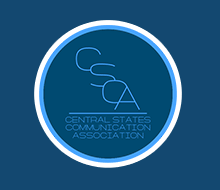Abstract
Introductory communication courses are an invaluable resource for improving students’ abilities to speak confidently, passionately, and persuasively, while also inspiring them to become more engaged citizens. However, digital media present new opportunities and challenges for designing courses that are relevant to students’ personal and professional interests and goals. Instructors who incorporate digital communication platforms, networks, and technologies into their classrooms can better prepare students to meet the complex demands of the technologically-mediated 21st century. In this essay, I offer 10 best practices for developing students’ digital media literacies within multiple communication contexts.
DOI
10.31446/JCP.2019.22
Recommended Citation
Proszek, J. M. (2019). Developing a digital voice: Embedding digital communication networks, platforms, and technologies in the 21st-century classroom. Journal of Communication Pedagogy, 2, 127-133. https://doi.org/10.31446/JCP.2019.22
Included in
Communication Technology and New Media Commons, Educational Assessment, Evaluation, and Research Commons, Educational Psychology Commons, Educational Technology Commons, Other Communication Commons, Other Education Commons, Scholarship of Teaching and Learning Commons


